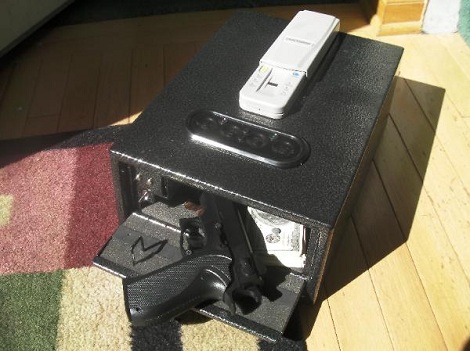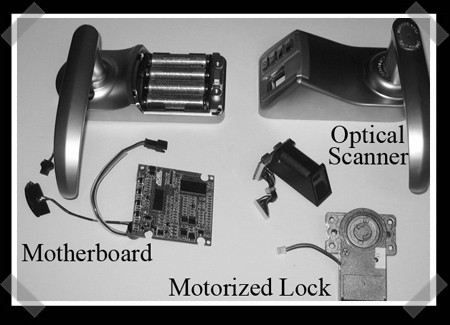[Greg] sent in his biometric pistol safe lock. He keeps his guide light on details so not every Joe can crack the system (there is a thread to sift through if you really wanted to), but the idea runs fairly simple anyway. [Greg] took an old garage door opening fingerprint scanner and wired it into a half broken keypad based pistol safe. While he did have some issues finding a signal that only fired when the correct fingerprint is scanned, a little magic with a CMOS HEX inverter fixed that problem quick.
This does bring one question to our minds, are fingerprint scanners as easy to crack as fingerprint readers?















